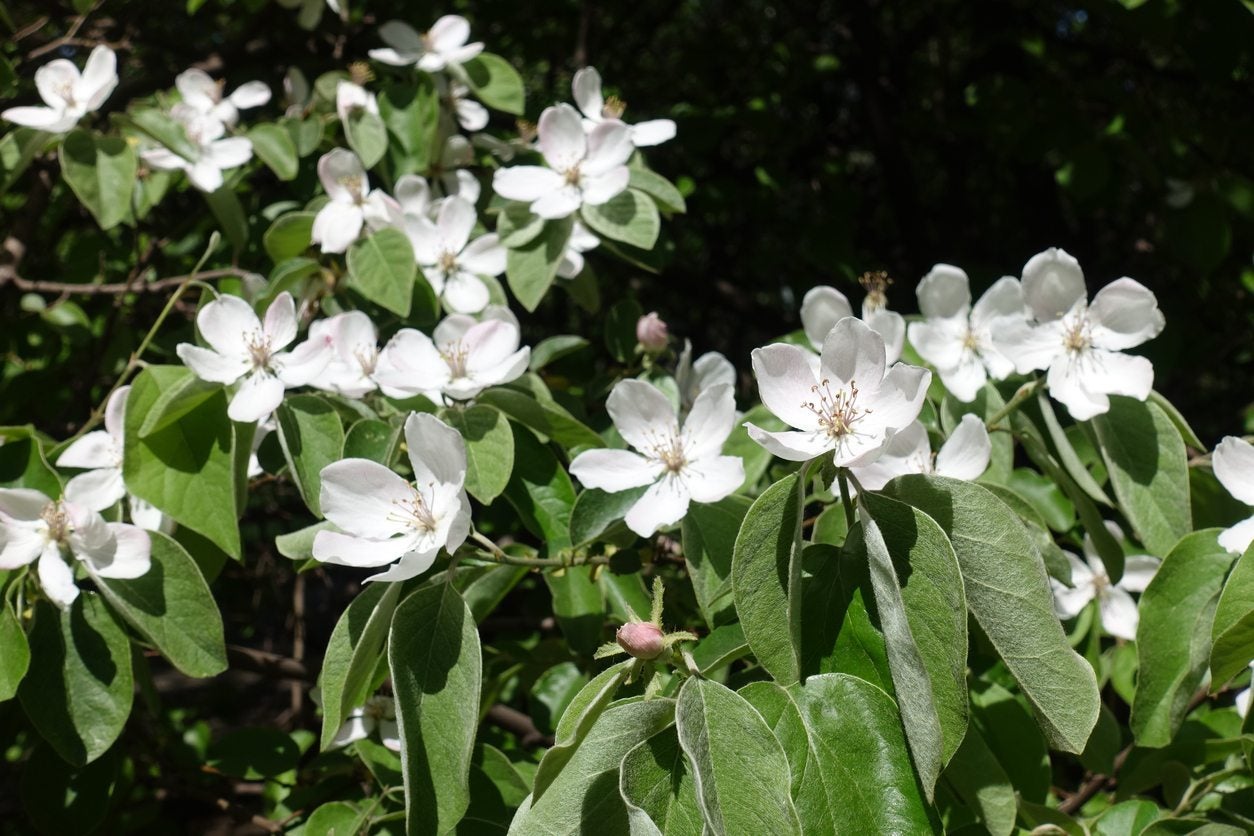Flower Drop In Quince: Why Is Quince Tree Dropping Flowers

The quince is a fruit tree with a long history of cultivation in western Asia and in Europe. Quince fruits are eaten cooked, used to make jellies and preserves, or fermented to make alcoholic beverages. A few varieties can be eaten fresh. Quince fruits are yellow and almost pear shaped when ripe. In fact, the quince is closely related to apples and pears: all three are pome fruits and members of the rose family. It is possible to grow them at home similar to growing apples. What happens when they lose their blooms and fail to fruit though? Read on to learn more.
Why is My Quince Losing Flowers?
A quince tree (Cydonia oblongata) covered with white and pink flowers in springtime is a lovely sight. When these flowers fall off before producing fruit (known as blossom drop), it’s certainly disappointing. Quince blossom drop may be due to several factors. Some amount of flower drop in quince is normal. The flowers near the tips of branches are the most likely to set fruit. Flowers located along the branches frequently fall off, but you may still get a good harvest. Also, trees under five or six years old are unlikely to produce a full crop, so a greater proportion of their flowers may drop off. Lack of pollination is another common reason. This may be because of a scarcity of pollinating insects such as honeybees. Also, even though most quince varieties are self-pollinating, having a second tree of a different variety may help increase fruit set and prevent blossoms from falling off. If you have a variety that’s not self-fertile, you will need a second tree for pollination. Inclement weather can damage flowers or interfere with pollination as well. Anything that weakens a quince tree, such as diseases, drought, lack of sun, or poor soil, may increase the level of flower drop in quince.
What to Do for a Quince Tree Dropping Flowers
Consider planting a second quince tree of a different variety to assist with pollination. This is not essential for self-fertile varieties, but it typically leads to better fruit set. Look for any signs of poor health or poor environmental conditions and try to correct them. Lack of water, waterlogged soil, heavy insect infestations, low sunlight, and other adverse conditions will make almost any fruit tree less productive. Quince trees are susceptible to several diseases. Leaf scab, caused by a fungus (Diplocarpon mespili), manifests as brown spots on the leaves and on any fruit that are produced. This could potentially cause low fruit set. The best way to control this disease is through sanitation practices: remove and dispose of all fallen leaves in autumn to prevent the fungus from overwintering in leaf litter. Also, avoid watering the leaves, since this helps encourage the fungus.
Sign up for the Gardening Know How newsletter today and receive a free copy of our e-book "How to Grow Delicious Tomatoes".
Ilana Goldowitz Jimenez is a scientific and agricultural writer with a B.S. in Plant Sciences from Cornell University and a PhD in Chemical Biology and Infectious Disease from Harvard University.